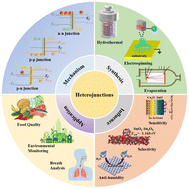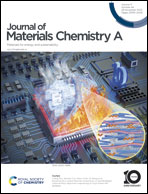Nanostructured metal oxide heterojunctions for chemiresistive gas sensors
Abstract
Owing to the advantages of the high specific surface area, excellent electronic conduction behavior, and special diffusion pathways originating from nanoscale heterojunctions, there is a need to analyze the representative gaseous biomarkers that contribute to the wide application of nanostructured metal oxide heterojunction-based gas sensors. Herein, we describe different available routes, including electrospinning, chemical/physical vapor deposition, atomic layer deposition, and hydrothermal routes, for optimizing the crystallinity and morphology of heterojunctions, and the effects of the major parameters of these methods on the gas-sensing performance are deeply explored. On the basis of analyzing the correlations among the process–structure properties, the effects of heterojunctions on the elevated gas-sensing properties are mainly manifested in reducing the operating temperature and improving the sensitivity, selectivity, and humidity resistance. The limitations that exist inside the heterojunctions are also highlighted. This review also proposes insights into the limitations and future topics on the utilization of nanostructured metal oxide heterojunctions. Ultimately, it is expected that this study will provide a fundamental theory for breaking through the limitations of the heterojunctions and further promote their application in environmental monitoring, disease diagnosis, and food quality assessment.

- This article is part of the themed collection: Journal of Materials Chemistry A Recent Review Articles


 Please wait while we load your content...
Please wait while we load your content...